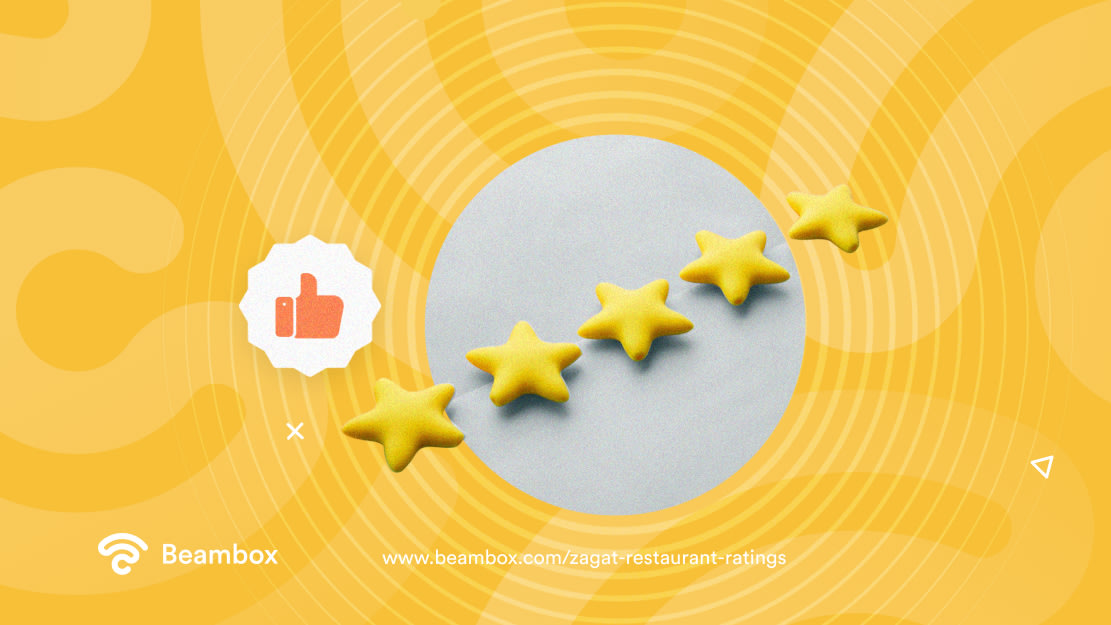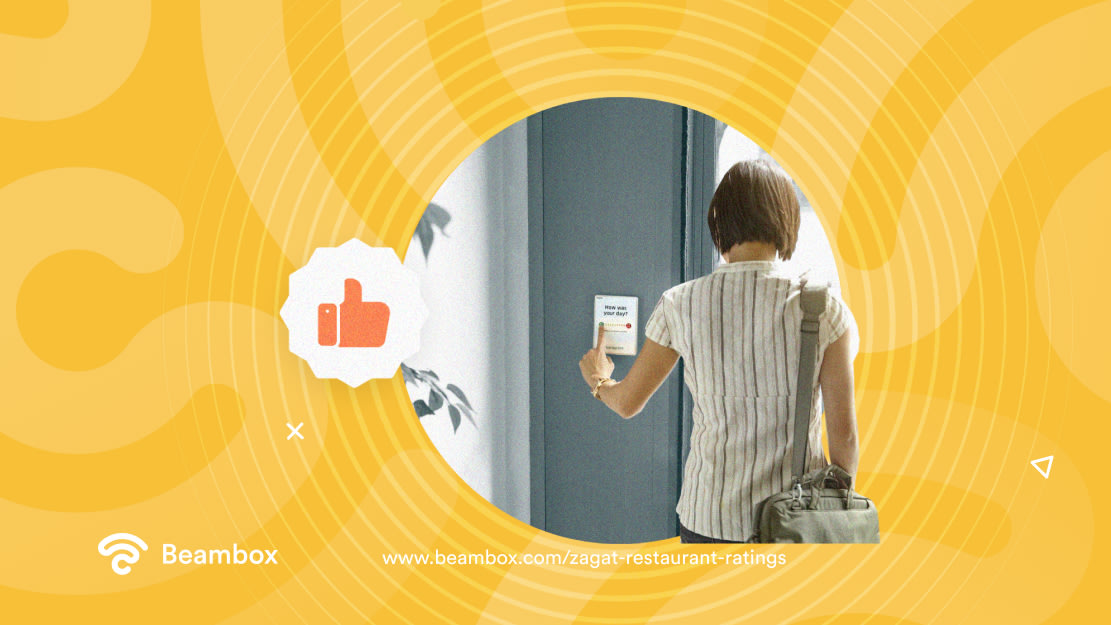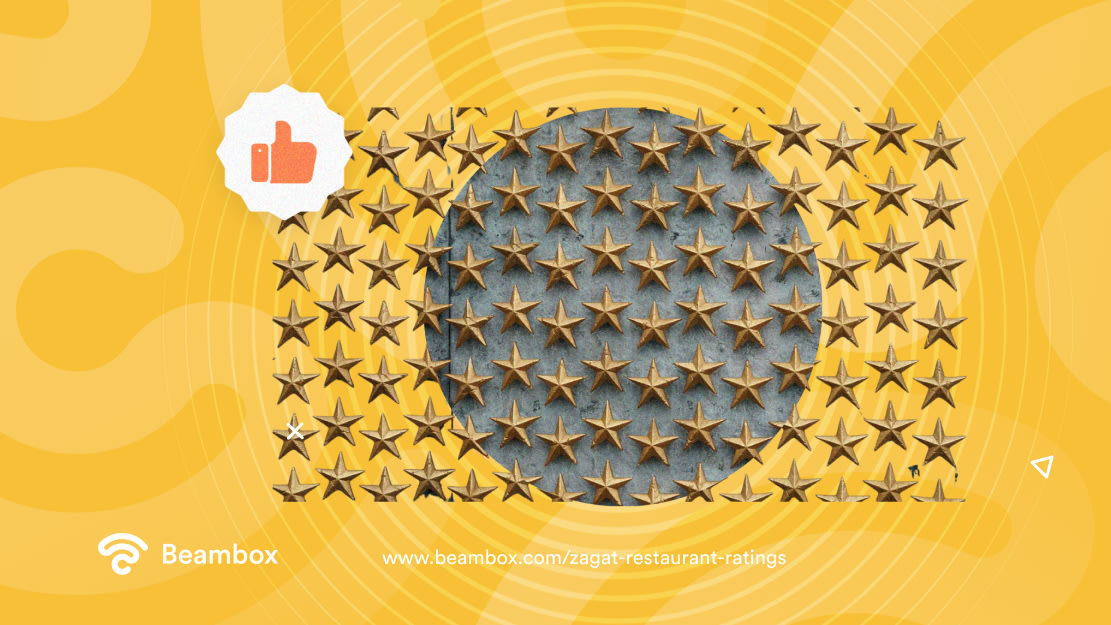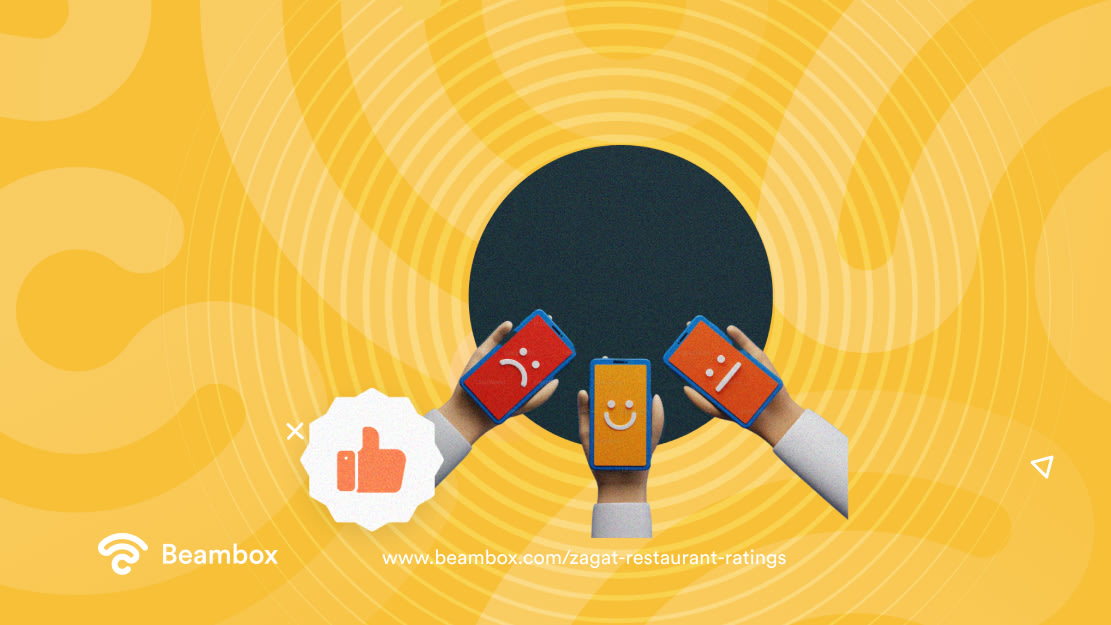Chances are you know about Michelin ratings, so what about Zagat restaurant ratings? Using the original Zagat restaurant rating system, you rank restaurants on a 30-point scale for food, decor, and service.
Zagat has undergone some significant changes, though, initially sold by founder Nina Zagat in 2011. Google then sold the system in 2018 to The Infatuation, and Zagat’s declined in popularity in subsequent years.
But that doesn’t mean the system can’t still teach you a thing or two about running a successful restaurant.
This guide will closely examine precisely what Zagat did - and does. By understanding Zagat’s system, you can better understand the parameters of how to run a successful restaurant. Studying restaurant review systems is an excellent way to boost your own business.
Here’s everything you need to know about Zagat ratings and using ratings to improve your restaurant.

What are Zagat Restaurant Ratings?
Regarding restaurant ratings, Zagat is a system that collects and compares different ratings. Zagat provides an overview of quality in the restaurant industry, using different ratings as quality assurance benchmarks.
The whole point of this rating system is that restaurants have standards to strive for. Restaurants are held to a sense of performance accountability. Similarly, customers know which restaurants are worth visiting and what they can expect from each experience.
Tim and Nina Zagat are responsible for creating the rating system, opening The Zagat Survey in 1979. The couple-duo initially began by reviewing restaurants in their local area and belonging to friends.
However, quickly, the movement grew. Zagat spread worldwide before its 2011 acquisition by Google. Nina and Tim grew a successful business, and Zagat was a massive name between 1985 and 2011.
Zagat’s original scale was a 30-point system, 26-30 being that extraordinary spot restaurants were jostling for, and 20-25 being excellent. Anything less than 16 left significant room for improvement. In current ownership, it runs on a five-point scale, which is much more in keeping with modern rating systems.
Nowadays, Zagat is run by The Infatuation, which is a restaurant rating app. It is nowhere near the scale of Michelin or the other major food rating systems.
However, it still exists and garners a significant enough following. Restaurant owners can use the Zagat system to self-analyze their business, if not to seek a rating. It offers a great reminder of industry standards and aspirational performance benchmarks.

Main Differences Between Michelin and Zagat Ratings
So, what are the main differences between Michelin and Zagat ratings? It is natural to compare the two, although it’s worth noting that you are comparing them at different business stages.
Zagat saw its heyday before 2011, while Michelin is arguably still in its peak success period. It is worth noting that social media and the power of influencers coverage are overtaking the weight of reviews, though. This modern reality slightly overshadows even comparisons of Michelin vs. Zagat ratings.
Nevertheless, these are the main differences between the two rating systems. Check out the top three:
1. The Selection System
The selection system is one significant difference between Zagat and Michelin ratings. There’s a vast difference in how you win a Michelin star vs. a Zagat rating. Michelin is much more hush in its selective process.
You’ll likely receive a visit from an undercover reviewer, and these restaurants undergo selection primarily based on ‘hidden secret’ appeal. Zagat goes much more on where the mass buzz is and doesn’t have the same exclusive or expert edge.
These selection systems mean you access very different restaurant recommendations and ratings catalogs. As a whole, Michelin is much more exclusive, while Zagat offers a much more general ranking system.
2. The Process of Rating Calculation
The next huge difference is the process of rating calculations. Michelin uses a singular - or perhaps a couple of - investigator who reviews food quality and has lots of specialist training. While the investigators undergo training in objectivity and enter anonymously to avoid special treatment, it is elite. And when there’s a singular investigator, it is somewhat subjective.
In contrast, The Zagat Survey operates on a mass rating calculation process. The survey collects the reviews and ratings from many guests, incorporating them into a final rating.
While those ratings might not all come from expert reviewers, it is more reliable. And with more reviews, there’s less subjectivity, as the Zagat rating is average. There can be as many as thousands of reviews for each restaurant.
As you can see, the two rating calculation systems are miles apart. Zagat operates on a mass reviewing basis, calculating an average. Michelin operates on an individual review scheme, presenting a more subjective yet authoritative single rating.
3. The Final Rating Layout
The final rating is another huge difference between the two, or at least, it was historically speaking. The Zagat Survey classically used a 30-point system. 26-30 was extraordinary, 20-25 was great, 16-19 was good, and anything less leaves room for significant improvement. Under new ownership, though, it now uses the standard five-star rating system for restaurants for certain businesses.
In contrast, Michelin works on a three-point system. Restaurant owners can earn up to three Michelin stars. One means it is a great restaurant, and two means it is an excellent restaurant and worth a detour. And finally, three means it is an exceptional restaurant and worth a special journey.

Things Zagat Ratings Take Into Account
What does the rating system consider now that you understand how Zagat ratings slot into the restaurant review scene? If you are going to improve your business or would like to get a rating, these are the performance criteria. Check out the main things that Zagat takes into account.
1. Food
Food is the major one here. Zagat takes its food quality review very seriously, judging based on taste, presentation, and value for money. If you want to score highly with Zagat, you must pay attention to your food. Besides, how on Earth do you expect to run a good restaurant without good food? You should always be striving to improve food quality.
One great way to improve food quality is by being transparent with food sourcing. Even little touches like QR codes on menus taking customers to details on their ‘food’s story’ can boost this section. It doesn’t have to necessarily involve changes to the food itself, just the customer’s relationship with the food.
2. Decor
The decor might seem a shallow addition to these ratings, but decor massively impacts how customers experience restaurants. Zagat ratings always incorporate decor into their final ranking. You should aim for trendy or characteristic decor to perform well and score highly.
You should also prioritize keeping your restaurant decor to a high standard rather than letting it get ratty. There’s nothing worse than shabby decor; if your restaurant is successful, it should look successful, too. It reflects poorly on your willingness to reinvest in your business if it doesn’t.
3. Service
Finally, service is a big one. Controversially, Michelin doesn’t incorporate service into its rating system. This reduces the likelihood of one-off staff encounters endangering the business’s reputation. And by doing this, Michelin focuses more on the chef and food. Zagat throws this confidently out of the window. With Zagat, the restaurant service receives no such free pass.
Everything comes under scrutiny with service, from wait staff attentiveness to menu advice and culinary knowledge. Service is a huge customer experience, so why shouldn’t Zagat users hear about it?
Simply put, service impacts experience, and Zagat records that. You should ensure that your staff have all the necessary training and understand how to act in accordance with values.

Final Thoughts: Just How Important Are Ratings
You don’t need us to tell you the importance of online reviews. Think of how businesses scramble to remove bad Google reviews - positive ratings correlate with positive profit. Ratings really do matter. The power of positive ratings can bring more customers, build customer loyalty, and drive an overall profit increase. Ratings are part of your broader reputation in the industry, and restaurant owners should take that seriously.
With Zagat ratings specifically, it is also worth taking them seriously. While Michelin has overtaken Zagat in formality and widespread reference, Zagat still has hundreds of thousands of users. It is still a big name to get behind among the more seasoned industry experts and leaders.
Zagat’s online presence is a priority for The Infatuation - its current owners - so it could grow in this digital age. You should always take ratings seriously, and Zagat is no different. Plus, it has a lot of history and weight behind its name.
Tools like Beambox’s elite WiFi platform make a substantial difference when encouraging more general customer reviews. You don’t need expert ratings; even customer ratings can get you reputation results. Start your Beambox free trial today. We’ll help you rocket your restaurant reputation and jump from Google reviews to Zagat restaurant ratings and more.
Get Started With Free WiFi Marketing
Beambox helps businesses like yours grow with data capture, marketing automation and reputation management.
Sign up for 30 days free